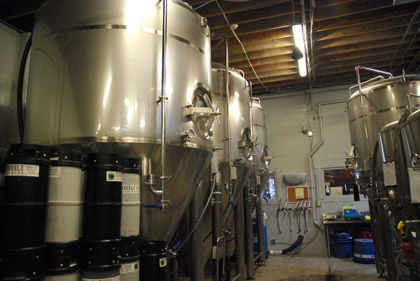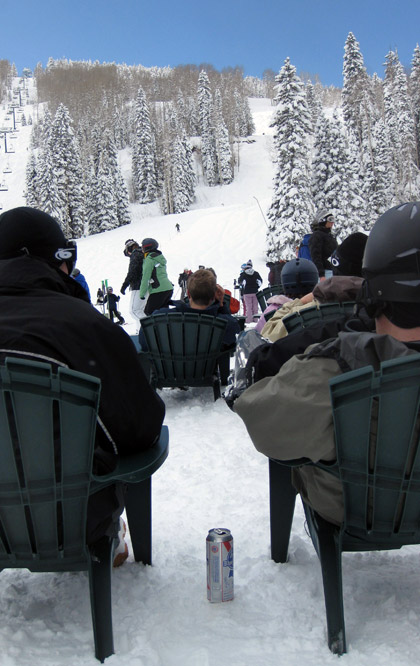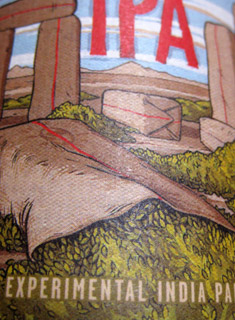
Marble Brewery in Albuquerque recently installed three more fermenters (above, on the left), each holding 45 barrels (almost 1,400 gallons). Marble brews mostly ales, so running 26 batches through each fermenter over the course of a year would constitute a leisurely pace and still yield more than 3,500 barrels.
Now consider this. When Ken Grossman and Paul Camusi founded Sierra Nevada thirty years ago the business plan called for production to max out at 3,000 barrels. “We figured we could make money at that, we wouldn’t get rich but we’d get by,” said Grossman, now the company president. Sierra Nevada produced 1,500 barrels the first year (1980) and passed 3,000 in its fifth. It now brews nearly 700,000 annually.
All things are relative. Yesterday Stephen Beaumont pointed to a Wall Street Journal story about U.S. beer sales volume falling. He suggests this is a victory for boire moins, boire mieux (drink less, drink better). I’m certainly on board with the drink better part.
He writes that the WSJ “doesn’t see this because they’re used to looking only at the large, public corporation side of things.” Indeed, 3,000 barrels here, 3,000 barrels there . . . nothing to the global beer powers. But 3,000 barrels equals close to one million 12-ounce bottles. To those of us buying niche beers that’s a lot of bottles.
Before 2009 no New Mexico brewery since Prohibition (and we don’t have numbers from before) had brewed 5,000 barrels. Marble made 5,200 last year, an increase from 1,950 in 2008 (the brewery began selling beer in April that year). The increase was a ridiculous 267 percent, the actual growth 3,250 barrels.
OK, you never heard of Marble. That’s part of the point. Also Great Divide Brewing in Colorado grew a little over 3,000 barrels (34 percent) in 2009 to about 12,000 barrels. And sales at Saint Arnold Brewing in Texas increased 13 percent (production rising not quite 3,000 barrels) to nearly 26,000 barrels.
We’ll never know how much Bud Light Lime A-B InBev sold in the Albuquerque area in 2009. Maybe it was more than 3,000 barrels, but it’s still just another brand passing through. Before that it was Miller Chill. Nothing changes.
But things have changed in the cooler at the only market in the village where I live. Corrales is an anomaly, long and narrow with about 8,000 people and no stop lights. Albuquerque and Rio Rancho are hard by and that’s where most people shop. Drive two miles past Frontier Mart and there’s a full-size grocery store with cheaper milk and a fully stocked liquor store.
Still, Frontier always had a solid, if limited, wine selection and the usual “craft” beer suspects. Then this fall they squeezed soft drinks into one cooler facing, making room for many more beers. Instead of just offering Sierra Nevada Pale Ale they have Torpedo. Always something from Deschutes and Full Sail. More than Fat Tire from New Belgium. And at least four New Mexico beers.
A-B InBev still owns the floor display, including its lineup of beers brewed in Belgium, but this is real change. Change not so easily measured by numbers.
***************
Of course we’re headed back to number season, and there’s every chance figures for 2009 may not look as glossy as recent years. We know Boston Beer production was up 1.6 percent in 2009, and Samuel Adams sales seldom stray far from the rest of craft (in no small part because they account for more than one bottles sold out of every five). In 2008 the category was up six percent, Sam Adams six percent. In 2007, Sam Adams 14 percent and “craft” 12 percent. You get the idea.


 Both the beer and the details herein.
Both the beer and the details herein.